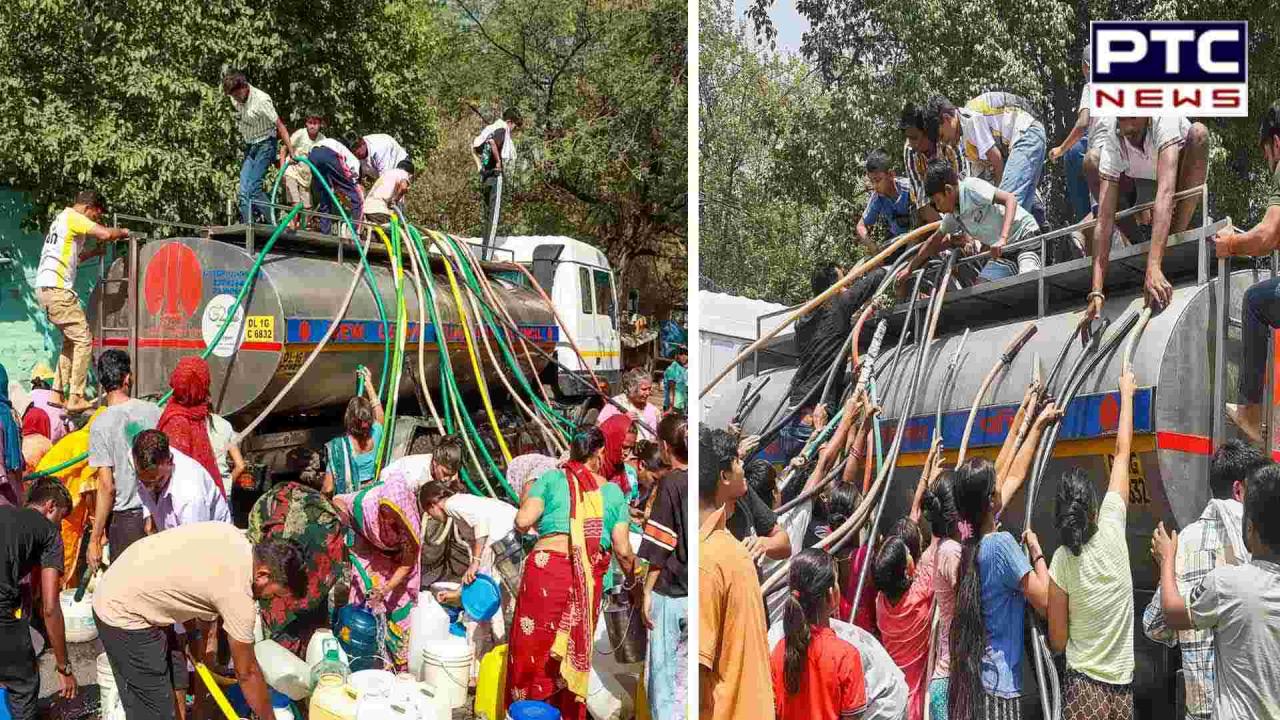- March 31, 2025
- Updated 2:22 am
Water crisis loom large as levels dip in Punjab, Rajasthan dams compared to normal storage, says CWC report
Water crisis: In the wake of the upcoming monsoon season, the northern region of India, encompassing Himachal Pradesh, Punjab, and Rajasthan, has reported varied water storage levels across its major dams. According to a recent Central Water Commission (CWC) report, while some dams have recorded surplus water, others have seen a decline in water storage compared to both the previous year and the normal levels for this period.
The report in this regard has been published in ‘The Indian Express’.
Notably, the CWC oversees the monitoring of 10 significant reservoirs in the northern region, which together have a total live storage capacity of 19.663 billion cubic meters (BCM). As of June 6, the cumulative live storage in these reservoirs was 5.888 BCM, which represents 30% of their total capacity. This figure is a decrease from the 39% recorded during the same period last year and slightly below the normal storage level of 31%.
Punjab’s Thein Dam
In Punjab, the Thein Dam has shown a significant decrease in its water levels. The current reservoir level stands at 506.77 metre compared to its full reservoir level (FRL) of 527.91 metre. The dam’s current live storage is 0.964 BCM, accounting for 41% of its live capacity at FRL. This is a decline from last year’s 52% and slightly below the normal storage level of 51% for this time of year.
_755621502387f83a1d802ea92016387c_1280X720_cea09874f1ea64fea35aaed4d1c57435_1280X720.webp)
Rajasthan’s Dams
Rajasthan’s six major dams—Mahi Bajaj Sagar, Jhakam, Rana Pratap Sagar, Bilaspur, Jawai Dam, and Jaisamand—are mostly experiencing lower water storage than usual, with the exception of Rana Pratap Sagar.
Jaisamand Dam: Currently holds 24% of its live storage capacity, a significant drop from 57% last year and 36% of the normal storage level.
Bilaspur Dam: Reports 29% storage this year, down from 59% last year and 41% of the normal level.
Jhakam Dam: Has 17% live storage, compared to 25% last year and 26% of the normal storage.
Jawai Dam: Shows 12% live storage, a decrease from 21% last year and slightly below the normal 13%.
Mahi Bajaj Sagar Dam: Currently at 30% storage, marginally lower than both last year’s 31% and the normal storage level of 31%.
Rana Pratap Sagar Dam: This dam is an outlier in Rajasthan, with 39% live storage against the normal 35%, although still less than last year’s 77%.

Himachal Pradesh’s Reservoirs
In Himachal Pradesh, the Bhakra, Pong, and Kol dams have fared somewhat better, with most showing a slight surplus compared to normal storage levels but less than the previous year’s storage, except for the Bhakra Dam.
Bhakra Dam: Currently has 30% live storage, up from 24% last year and above the normal 28%.
Pong Dam: Holds 25% live storage, lower than last year’s 38% and close to the normal 26%.
Kol Dam: Reports 48% live storage, down from 52% last year but significantly higher than the normal 31%.
The lower-than-usual water storage in several key reservoirs raises concerns about water availability in the coming months. This situation could impact irrigation, drinking water supply, and power generation, especially if the monsoon does not replenish these reservoirs adequately.
Recent Posts
- Crown of goddess Kali, gifted by PM Modi, stolen from temple in Bangladesh
- Hezbollah leader survives assassination attempt amid Israeli strikes that kill 22 in Beirut
- ਕ੍ਰਿਕਟ ਦੇ ਬਦਲੇ ਨਿਯਮ, ਹੁਣ ਇਸ ਕੇਸ ‘ਚ ਦੁਬਾਰਾ ਨਹੀਂ ਮਿਲੇਗੀ ਬੈਟਿੰਗ, ਮੰਨਿਆ ਜਾਵੇਗਾ
- ਸਚਿਨ ਤੇਂਦੁਲਕਰ ਦੇ ਬਰਾਬਰ ਪਹੁੰਚੇ ਜੋ ਰੂਟ, ਪਰ ਵਿਰਾਟ ਦੇ ਇਸ ਰਿਕਾਰਡ ਤੋਂ ਅਜੇ ਵੀ ਦੂਰ
- Ratan tata death: ਸਿਰਫ ਵੋਲਟਾਸ ਹੀ ਨਹੀਂ, ਸਵੇਰ ਤੋਂ ਰਾਤ ਤੱਕ ਤੁਹਾਡਾ ਕੰਮ ਟਾਟਾ ਦੇ ਬਿਨਾਂ ਨਹੀਂ ਚੱਲ ਸਕਦਾ